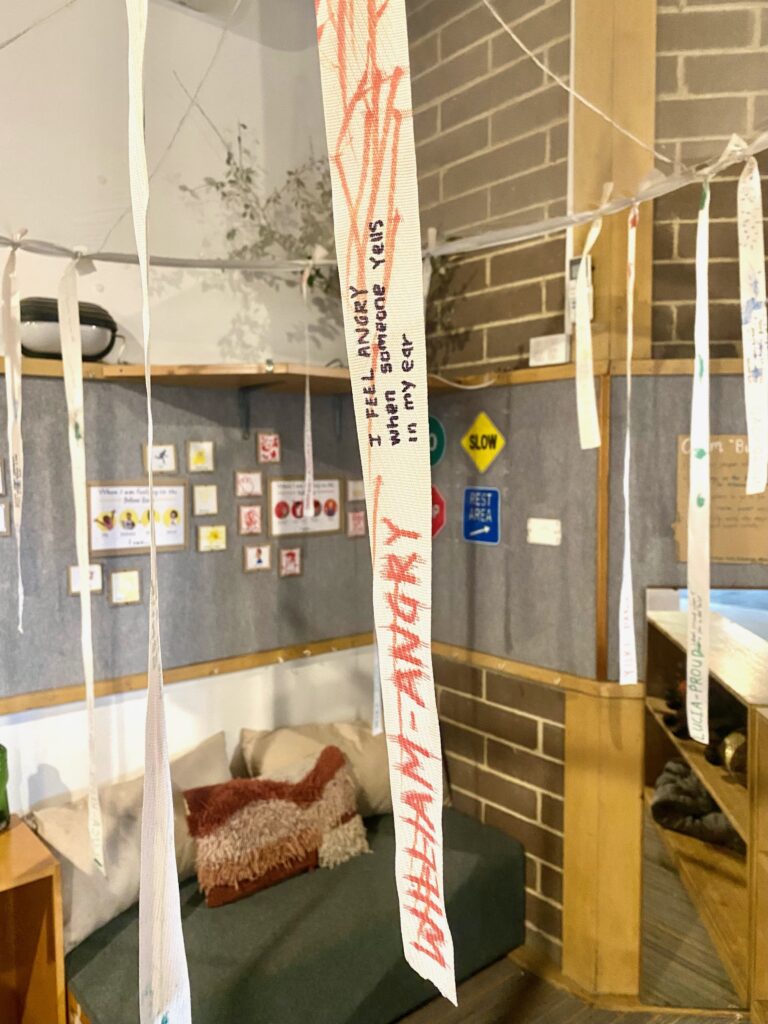


Before the first week of Term 1, our team sat down and discussed the obvious goal for our three–five-year-old kindergarten children; settling in and developing a sense of belonging. This would usually include feeling safe in their environment, building positive relationships with their teachers and peers, and feeling a strong sense of wellbeing. It became apparent through many observations of our children though, that in order for them to truly achieve this goal, they needed to be able to recognise, identify, understand, and manage their emotions. So, this is where our emergent program took us.
Emotional intelligence has always been such a big part of teaching and it is often taught through spontaneous conversations, social narration, and role-modelling throughout the day. This year, we realised that it was important for children that this teaching became more intentional. Perhaps this is an aftermath of COVID even? Restrictions on socialising have meant that children aren’t building the resilience, nor pro-social skills resulting in more intense emotions and challenges in responding to these emotions. So, it was time to discuss the implementation of the Zones of Regulation with the team and children.



The Zones of Regulation curriculum can be used for all ages, even from the time that children are pre-verbal. My colleague, Jessie, who is the Early Years Leader in the kindergarten program and previously in the zero-three years program has taught The Zones for the last five years. Jessie shared, “I started the Zones of Regulation when I was the Early Years Leader of the 0-3 years room where we began teaching simple emotions such as happy (green zone), sad (blue zone), silly (yellow zone) and angry (red zone). Through visuals, as we discussed each feeling, children slowly understood each zone regardless of whether they could verbally communicate what they were feeling yet. This was demonstrated through using phrases such as “I’m feeling sad, I’m feeling in the blue zone because you pushed me.” That child, being pre-verbal would often display empathy through action in response to my language such as a hug. Now, working with the older age group, I have been able to scaffold their learning by introducing more complex feelings such as frustrated, tired, jealousy etc.”.
It is important to us that we share this curriculum with the families of the children so that they can be consistent with the language and strategies that we are using in their home environment. We communicate this with families through sharing The Zones website, documenting our learning progress, and having many discussions around phrases and strategies to use. We reiterate that all zones or emotions are valid and should be acknowledged, however it is how we respond to our feelings that children may require support with. Jess, who is a Mum of two of our children in the kindergarten program shared that “we have been really impressed by how quickly our children (3 and 4 years) have integrated The Zones language into family life. I thought we talked a lot about our feelings before this but have found they are much quicker to call out their feelings in passing with The Zones. We have also found talking about their zones has caused us to reflect on and call out our zones as parents. This has led to some very robust (if not always wholly rational) discussions about how our feelings impact each other with all sorts of new colours coming out – your red zone puts me in the blue zone and family purple is not a fun place to be.”
Moving forward, we will be embedding The Zones into our program by continuing to use the language, adding our learning to the bubble space, and discussing the emotions of book characters. We are excited to see where our emotional intelligence journey takes us this year and thanks to The Zones of Regulation, we feel confident that children will be resilient, capable young learners.



Please fill out the form below and we will respond as soon as possible.